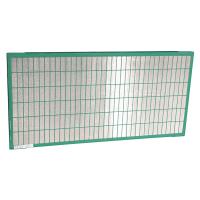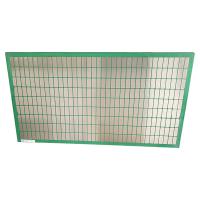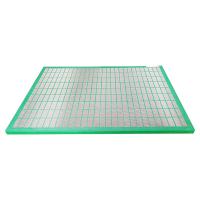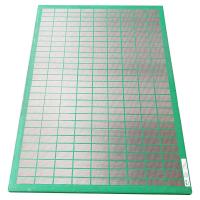
An inclined plate clarifier, also known as a lamella clarifier or inclined plate settler, is a type of wastewater treatment equipment used to separate solids from liquids. It is commonly used in industrial and municipal wastewater treatment processes.
The inclined plate clarifier consists of a series of inclined plates or tubes that are placed at an angle within a tank or basin. The plates are spaced apart to allow the wastewater to flow through them. As the wastewater passes through the inclined plates, gravity causes the solid particles to settle and slide down the plates, while the clarified liquid rises to the top.
The inclined plates provide a large surface area for the solids to settle, allowing for efficient separation. The settled solids, also known as sludge, accumulate at the bottom of the tank and can be periodically removed. The clarified liquid is collected at the top and discharged for further treatment or reuse.
The use of inclined plates in the clarifier increases the effective settling area, reducing the footprint required for the equipment. It also enhances the settling process by providing a longer path for the particles to settle, improving the overall efficiency of solid-liquid separation.
Inclined plate clarifiers are commonly used in applications where there is a need to remove suspended solids, such as in wastewater treatment plants, industrial processes, and stormwater treatment systems. They are effective in removing particles of various sizes, including fine solids that may be difficult to separate using conventional settling methods.
It's important to note that the design and operation of inclined plate clarifiers may vary depending on the specific application and requirements. Consulting with a wastewater treatment professional or engineer is recommended for detailed design and implementation.

A decanter centrifuge is a type of centrifuge that uses the principle of sedimentation to separate solids from liquids. It consists of a rotating bowl, also known as a drum, that has a cylindrical shape. The bowl is equipped with an internal conveyor, called a scroll, which rotates at a slightly different speed than the bowl.
When a mixture of solids and liquids is fed into the decanter centrifuge, the centrifugal force generated by the rotation of the bowl causes the denser solids to settle at the bottom, while the lighter liquids rise to the top. The scroll inside the bowl continuously moves the settled solids towards the conical end of the bowl, where they are discharged.
The separation process in a decanter centrifuge is based on the difference in density between the solids and the liquid. By adjusting the rotational speed and other operating parameters, it is possible to achieve efficient separation and obtain a clarified liquid stream and a dewatered solid cake.
Decanter centrifuges are widely used in various industries, including wastewater treatment, oil and gas, chemical, food and beverage, and mining. They are particularly effective in separating fine particles and have advantages such as high throughput, continuous operation, and low maintenance requirements.
For our equipment brochure or more info, please visit our unique official website: www.gnsolidscontrol.com
MichaelSong
Sales manager
Whatsapp:+8617801799913





